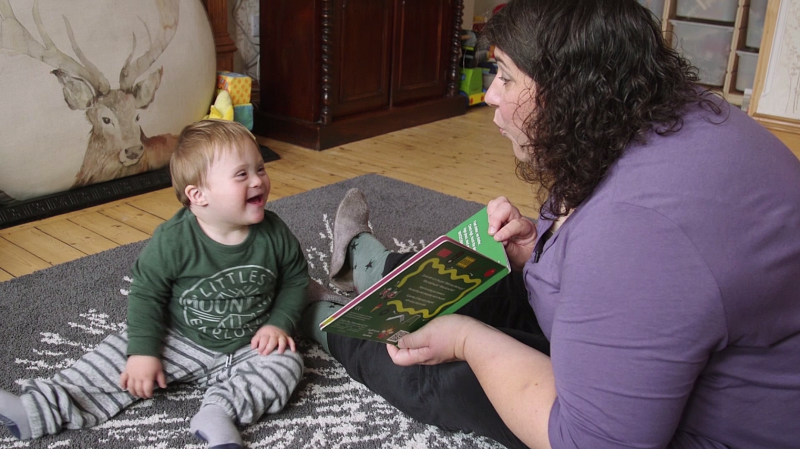Looking for more in Reading and Stories or Bookbug?
Sharing books with children with additional support needs
All children learn and develop in different ways. In order to inspire a lifelong love of stories, it’s important to find the right books - and the best ways of sharing them - for each individual child.

Here are some ideas to get you started on books for children with specific support needs:
Sharing books with deaf and hearing-impaired children
Sit so that children are at your level and can see your face. Keep eye contact and give children lots of time to look at the pictures. Try not to ask too many questions. Instead, adding commentary is a great way to extend language. For example, instead of ‘what colour is the giraffe's scarf? try ‘look at the lovely stripy scarf the giraffe has on. I think it will keep him nice and warm’.
Be animated in your signing but try not to sign when children are looking at the pictures - they may find it challenging to look at the pictures and the signs at the same time.
Use your body language and gestures as a way of communicating emotions, ideas and events from the story. Take things slowly so that children have chance to take in the pictures, text and your facial expressions.
You could also use props and objects to bring books to life. Try dressing up as a character from the book or using puppets to help you tell the story. This makes story time even more fun!
Sharing books with blind and partially sighted children
Sharing books with blind and partially sighted children is very important. Listening to your voice gives children a feel for the sounds and rhythm of language. It’s also a fun way for you to share quality time together.
Look for books with print that is easy to read. A bold font and a high contrast page – such as black on white – is best for children with vision impairments. Try to find books with simple illustrations and a story that is easy to follow without relying too much on the pictures.
Books with flaps, textures or noises are a great place to start. Give children plenty of time to explore these features at their own pace. If you are using tactile books, remember to tell children what they are about to feel so that the textures don’t come as a shock to them.
Add sound effects and use your voice playfully to bring the story to life. You may also find it useful to have props that help to tell the story. If you are reading a book about a bear, you could have a teddy bear for the child to hold. They may not be able to see pictures of the bear, but they can enjoy the feel of holding the bear as they listen to the story.
Sharing books with children with communication difficulties
The best books to share with children with communication difficulties will depend on their individual needs. Stories that have simple language and are not too long are probably a good place to start.
Books with a repetitive story (e.g. Monkey and Me, Shark in the Park) are good for encouraging children to join in. Books with bright, clear pictures may appeal to some children while tactile books with lots of different textures may be the best choice for others. You could even try wordless picture books and ask children to tell their own stories based on what they see in the pictures. What’s most important is that you try different books and help children to find their favourites.
Symbol sheets are a great resource because they let children point to pictures and share their responses to a book. Audio recordings and digital copies of books can also make them more accessible.
Whatever you choose to read together, remember to make it fun!
CALL Scotland resources
Scottish Book Trust is delighted to work with CALL Scotland(this link will open in a new window) (Communication, Access, Literacy and Learning), based at Moray House School of Education, University of Edinburgh.
CALL Scotland have created a fantastic pack of symbol sheet resources to accompany the books in the Bookbug Explorer Bag.
The resources can be used with children with additional support needs, communication difficulties and with English as an Additional Language. The symbol resources include Go Talk 9+ overlays (for recorded speech output) or can simply be printed out and used as low-tech symbol boards which the child can point to as they talk about each story. Bookbug Explorer resources(this link will open in a new window) are available.
CALL Scotland have also provided symbol sheets(this link will open in a new window) to help pupils with communication difficulties enjoy the shortlisted books for The Bookbug Picture Book Prize. (this link will open in a new window)
For more information, support, and resources go to CALL’s website(this link will open in a new window) or contact [email protected](this link will open in a new window) (phone 0131 651 6236).